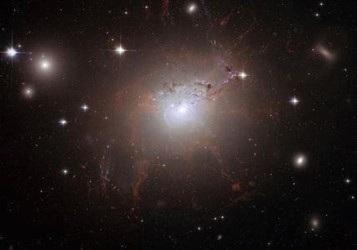SMASH Will Solve Five Major Questions Of Particle Physics

Expansion of the standard model provides a complete picture of the history of the universe
The extremely successful standard model of particle physics has an undesirable limit: it explains in the present version only about 15 percent of the matter in the universe. It describes and classifies all known fundamental particles and interactions. But this is only for the matter we are accustomed to. However, astrophysical observations are an enigmatic dark matter more than five times as often. An international team of theoretical physicists has now developed an extension of the standard model, which not only explains the dark matter, but could solve five major problems of particle physics at once. Guillermo Ballesteros from the University of Paris-Saclay and his colleagues present their SMASH model ("Standard Model Axion Seesaw Higgs Portal Inflation" model) in the "Physical Review Letters" booklet.
"SMASH is actually a bottom-up design," explains DESY scientist Andreas Ringwald, co-author of the study. "We have gone from the standard model and added only as little new as necessary to answer the open questions." For this purpose, the researchers have combined several already existing theoretical approaches and developed a simple, unified model. SMASH adds a total of six new particles to the standard model: three heavy right-hand neutrinos, an additional quark and a so-called axion and the heavy particle Rho (ρ). The latter two particles are described by a new field that passes through the entire universe.
With these extensions, the researchers can solve five problems: The Axion is a candidate for Dark Matter, which is more than five times as frequent as the familiar matter described by the standard model, according to astrophysical observations in the universe; The heavy neutrinos explain the mass of the already known, very light neutrinos, and the Rho, in conjunction with the Higgs particle, causes the so-called inflation, in which the very young universe, which has hitherto been unexplained, has suddenly expanded by at least a hundred quadrillion times. In addition, SMASH gives explanations of why there is so much more matter in our universe than antimateria, although in the Big Bang both must have arisen in the same quantity and why, with the strong force, one of the fundamental interactions, no violation of the so-called CP symmetry is observed can be.
"Overall, a complete, consistent picture of the history of the universe from inflation to today is emerging. And unlike many older models, you can calculate the most important values very precisely, for example the time when the universe re-heats after inflation, "emphasizes Ringwald.
By precisely calculating these values, SMASH may be tested experimentally in the next ten years. "The good thing about SMASH is that the theory is falsifiable. It contains, for example, very precise predictions about certain measured values of the so-called cosmic background radiation. Future experiments, which measure this radiation even more precisely, could soon exclude SMASH - or confirm the prediction, "explained Ringwald. Another test for the model is the search for axions. Because here too, the model can make precise predictions. If, in fact, axions form the bulk of the dark matter in the universe, they would have to have a mass between 50 and 200 microelectronvolts in the particle physics used in particle physics. Experiments that investigate the dark matter more closely could also test this prediction soon.
The study also included Javier Redondo from Saragossa University in Spain and Carlos Tamarit from the University of Durham in England.
Source: Deutsches Elektronen-Synchrotron
